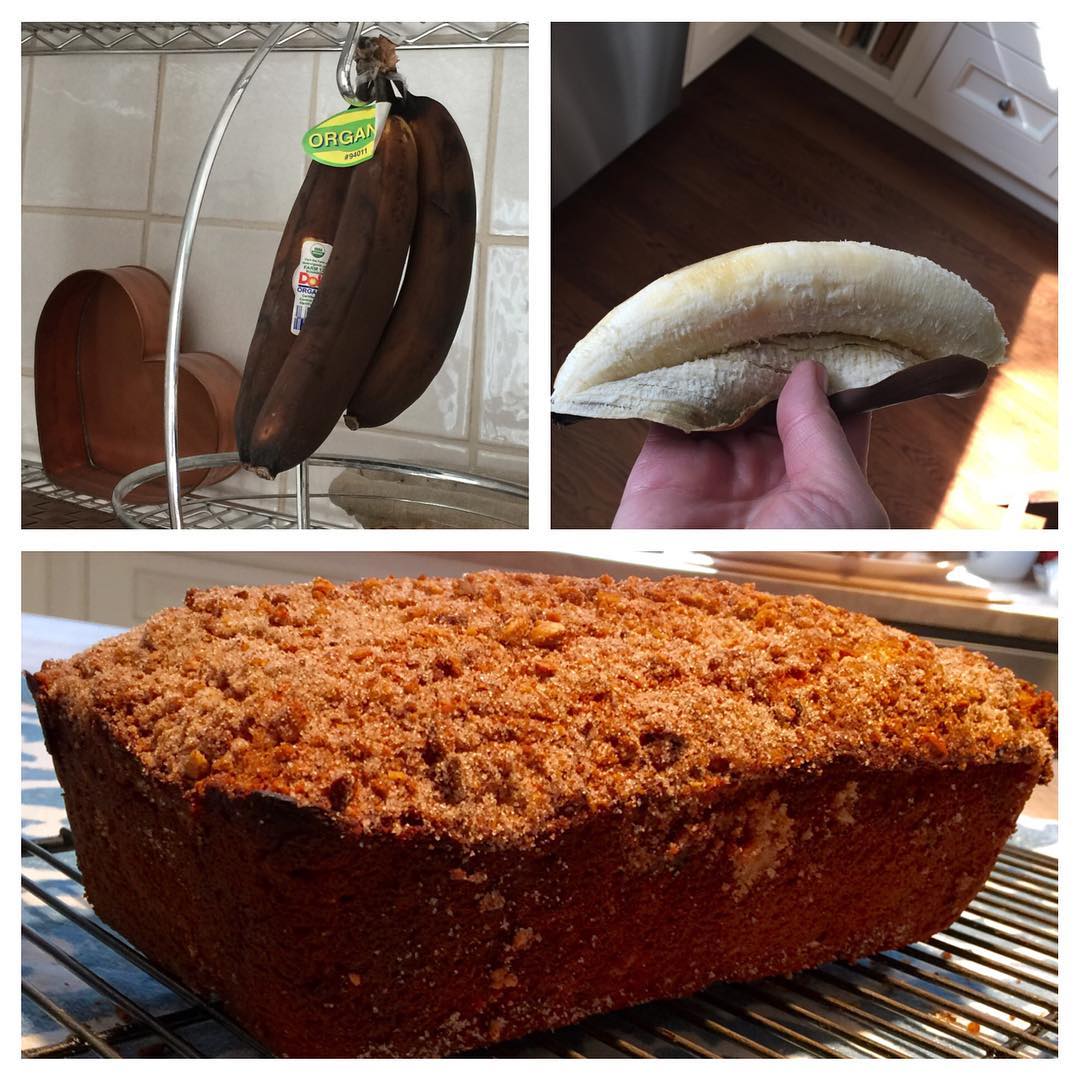
I hope you’ll become very familiar with this banana bread recipe; it’s probably the best there is and, when made in its simplest form, it’s one of the easiest recipes for banana bread. You’ll notice several ingredients listed as “optional.” This is to accommodate your mood, timing agenda or particular audience. I’m also hoping that this recipe will encourage you to use those “now or never” bananas. You know—the ones that are probably sitting in some cozy corner of your kitchen, right now, ready and waiting!
Any time I’ve suggested a tool, a piece of equipment, or a culinary term that’s unfamiliar to you, you can go to Learn to Cook for more information.
If you want to apply a topping to the banana bread, place those ingredients in either the bowl of a food processor or in a plastic bag and pulse to combine or roll over the ingredients, using a rolling pin. Set the topping aside, for now. Unwrap the stick of butter, cut it into cubes and put it in the bowl of your electric mixer. Cover the bowl and let the butter sit at room temperature, so it can soften. (To hurry this along, you can put a hot, wet, folded kitchen towel underneath the bowl. Don’t melt the butter, however.) Brush a 9 x 5-inch loaf pan with melted butter and set it aside. Place the raisins in a bowl, if using, and pour the hot tea over them. Let them steep until supple, about ten minutes, then lift the raisins out, lay them on paper towels to drain. Preheat the oven to 350°F.
Whisk together the flour, baking powder, salt and spices, if using them. Cream the butter with the sugar in the bowl of your electric mixer, fitted with the paddle attachment. When very light in both color and texture, add one of the tepid eggs and, while beating on a medium speed, let the egg become totally homogenous with the creamed mixture, before adding the next egg (give it at least 2 minutes of continuous beating after adding each egg). Beat in the vanilla. Leave the machine on while you purée or mash your bananas. Purée the bananas or mash them well with either a wide blending fork or an old-fashioned potato masher. When smooth, pour the purée into the batter while the machine is continually running. Stop the machine and, using a large rubber spatula, scrape the batter off the sides and up from the bottom of the bowl. Beat briefly again, then stop the machine. Add all of the flour mixture and, while mixing on a slow speed (pulse at first to avoid flour flying out from the bowl) combine the ingredients well without over-mixing. If using raisins, fold them in now, using the rubber spatula.
Pour all of the batter into the bowl and smooth the top with a table knife or a small off-set icing spatula. If using the topping, sprinkle all of it over the top of the batter. Bake the banana bread in the preheated 350°F oven for 50 to 55 minutes. (See the note below this step.) Remove the pan from the oven and place on a wire rack for 5 minutes. Run the dull side of a table knife around the sides of the pan. If you’ve used a topping, place a piece of wax paper on top of the loaf and then place another wire rack on top and invert the banana bread. Lift the pan off the loaf, then invert the loaf again, right side up, discard the paper and let it cool. (If not using a topping, the wax paper is not necessary, just place the rack directly on top of the loaf and invert, as directed.)
Note: When the banana bread is done, a tester will come out clean when inserted deeply into the top-center of the loaf.
Banana bread is best if left to cool completely before slicing. To store, once cool, either place on a platter under a domed lid, or wrap the loaf well in pliable plastic wrap and slip the loaf into a large heavy-duty plastic bag. Either way, store the banana bread at room temperature.